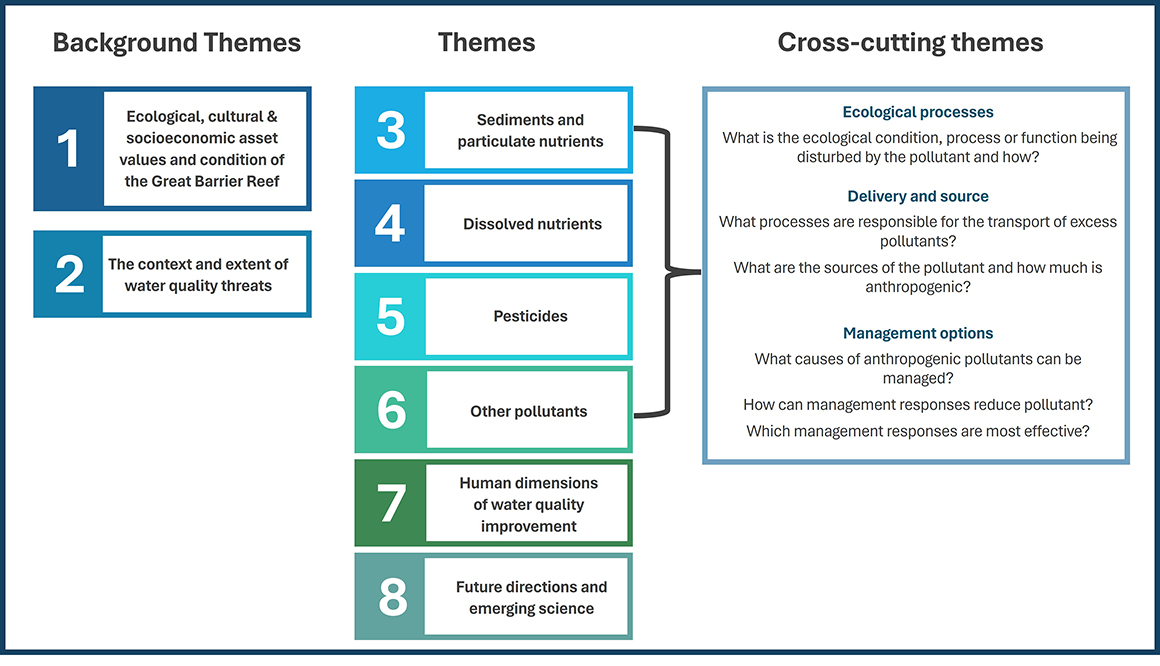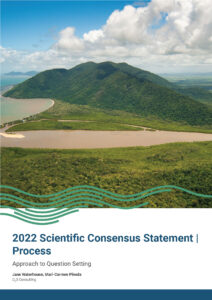The question setting process used an iterative approach involving policy and management representatives, stakeholder and scientific teams to identify a set of priority needs that could be met by answering a set of well-defined questions. Potential topics were initially identified from a range of sources including previous Scientific Consensus Statements, topics raised during the 2019 Senate Inquiry[1], emerging science since the 2017 Scientific Consensus Statement, and a paper from a peak agricultural body. This exercise resulted in the identification of more than 100 potential questions across eight broad Themes.

The initial set of questions was refined through an iterative and consultative process over several months to identify priority questions. The process involved consultation with scientific experts, a small group of policy management representatives, stakeholder and Traditional Owner groups to discuss their ideas and needs for questions to be addressed in the 2022 Scientific Consensus Statement. This step involved formal meetings and circulation of the draft list of questions to over 70 stakeholders and end users including policy and management representatives, scientific groups, Traditional Owners, agricultural and tourism industries, and conservation organisations. In total, 30 written responses were received. Further meetings were held with policy and management representatives to review and prioritise the questions.
The Scientific Consensus Statement’s Coordination Team (led by C2O Consulting) also assessed whether questions could be combined or consolidated to avoid potential overlap in content, and whether some questions were more appropriate for other projects or initiatives. At the end of the consultation process, a total of 32 questions, several containing sub-questions, were defined across eight Themes (Note: some Themes were later merged to facilitate the consensus process and for presentation purposes). Later in the process, three background questions about the drivers, pressures and threats to the current condition of the Great Barrier Reef (1.2, 1.3 and 2.1) were merged resulting in a final list of 30 questions.
The final list of questions was endorsed by the Reef Water Quality Independent Science Panel and signed off by the Australian and Queensland Contract Managers for the project. The wording of some questions was slightly modified once Lead Authors were appointed to clarify the intent of the question. Any changes to questions were endorsed by the Reef Water Quality Independent Science Panel.
[1] Rural and Regional Affairs and Transport References Committee: Identification of leading practices in ensuring evidence-based regulation of farm practices that impact water quality outcomes in the Great Barrier Reef, October 2020


